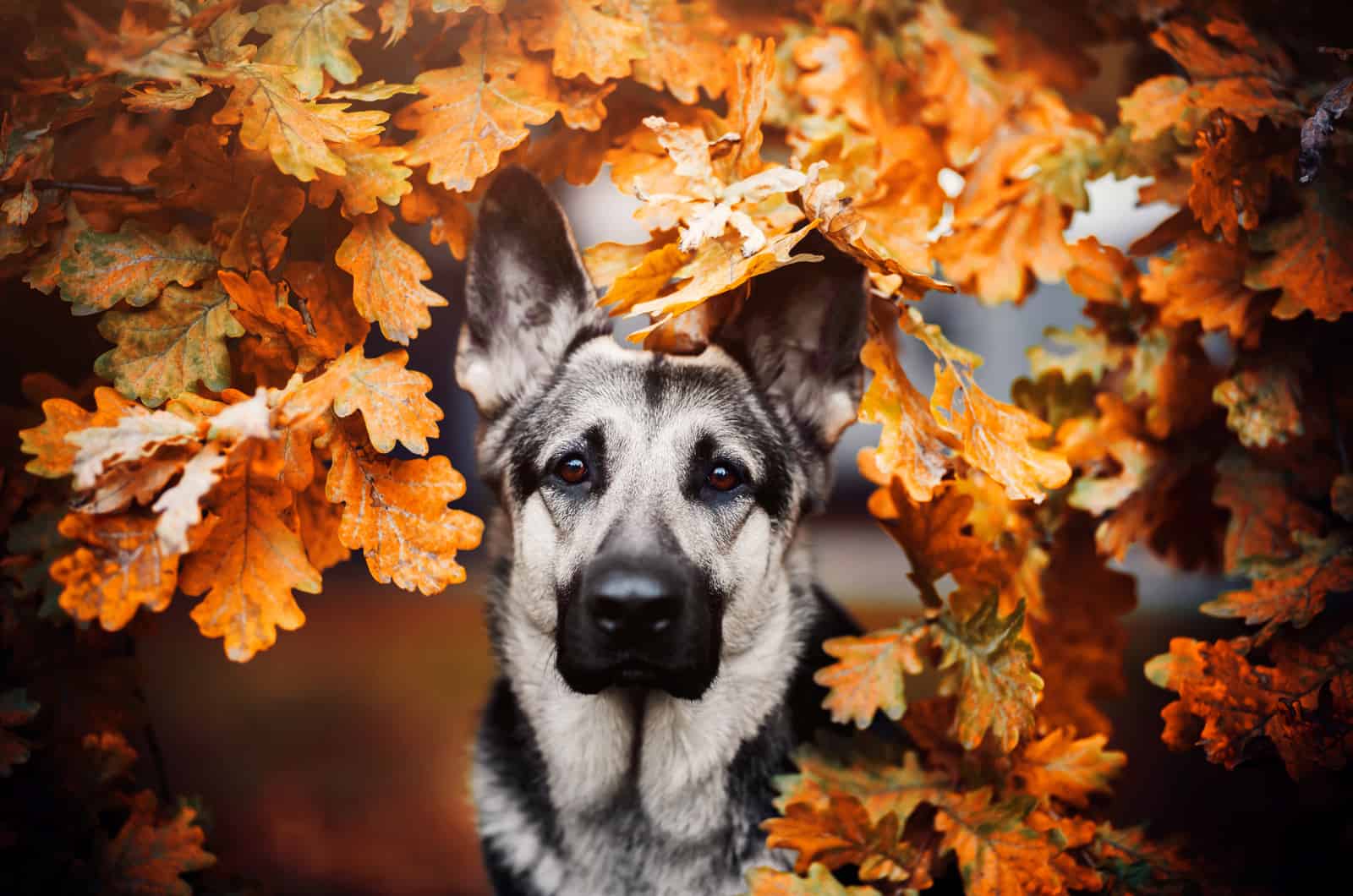The term silver German Shepherd surely sounds beautiful and exotic. Silver is quite a rare color in the German Shepherd color group. But, the color, silver, describes not only one color, but a wide range of color shades in different dogs.
In most cases, silver in dogs comes as a metallic sheen.
Generally speaking, German Shepherds are one-of-a-kind dogs, with their long coats in many different colors. They all are truly stunning, but what about the silver coat?
Still, this is such a wonderful coat color; something you don’t see every day. Why don’t we figure out what’s so special about silver German Shepherds besides their color?
What Is A Silver German Shepherd?
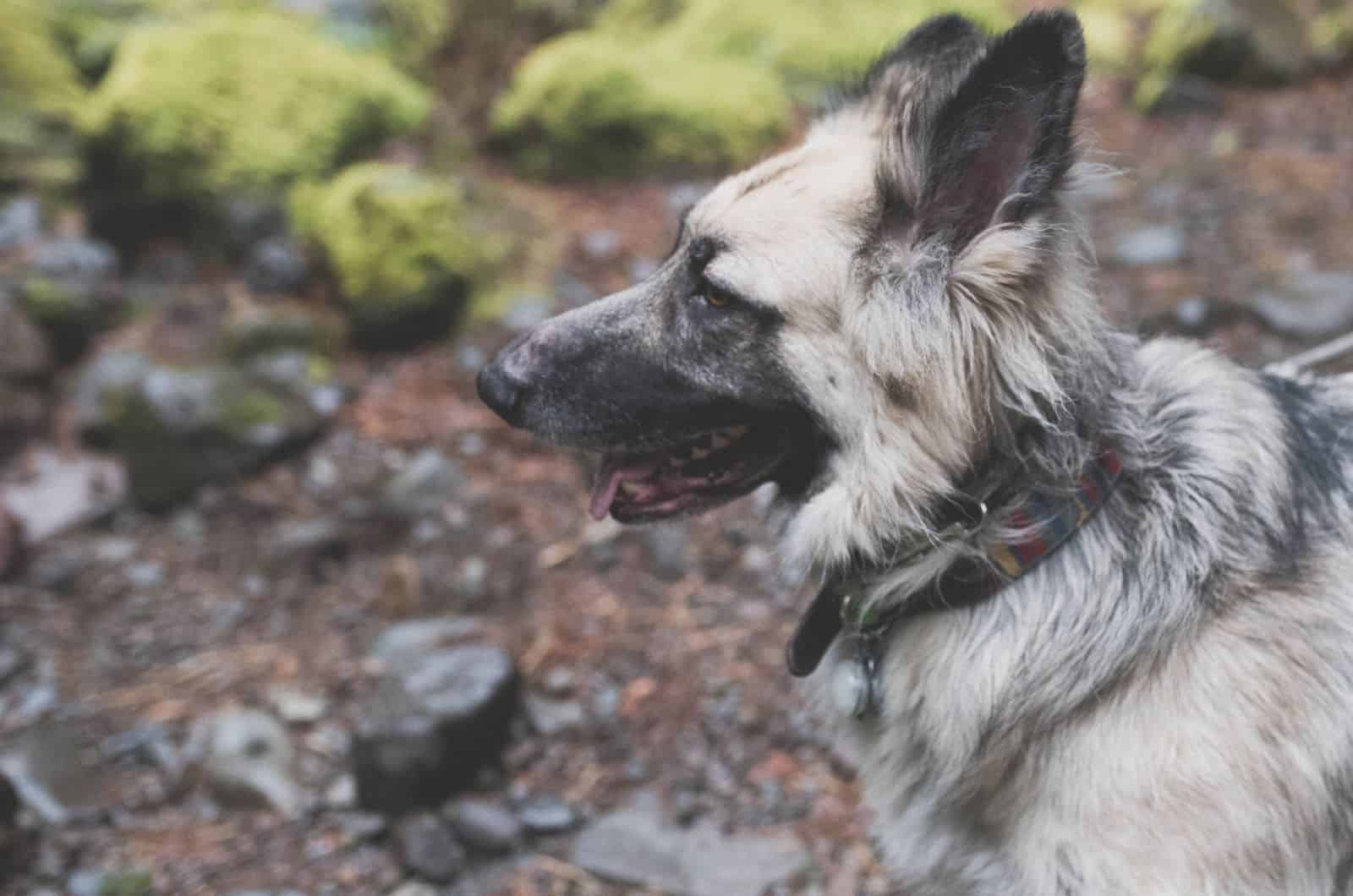
A silver German Shepherd is not always a grey dog that shimmers. That would be ridiculous! Silver refers to any Shepherd with an ott-tan color.
When it comes to German Shepherds, silver can range from cream color to an off-white. A very light-colored coat appears silver or grey next to the contrasting black hairs on a sable dog, or against the backdrop of a black blanket or saddle.
Scientists believe they can explain the unusual color as the action of a modifier on red or tan hairs.
History And Origins Of The Silver German Shepherd
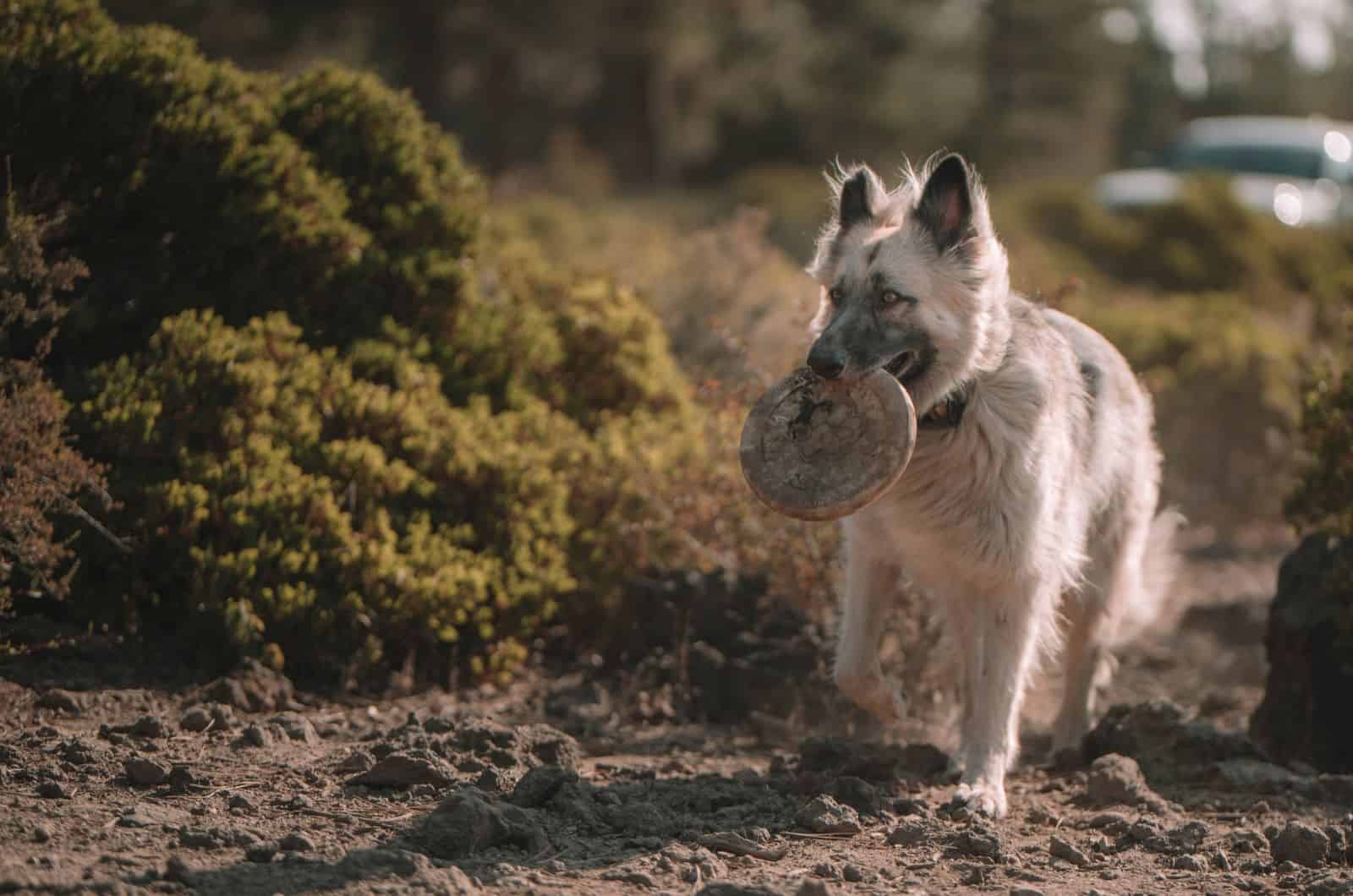
First, what you need to know is that the silver German Shepherd is the same as any other colored German Shepherd.
There are no differences in their origins. All German Shepherds are the same breed.
This also means that this color won’t affect the dog’s character, health, or fitness.
The origins of the German Shepherd Dog date back to Germany, when cavalry officer Max von Stephanitz decided he wanted to breed the ideal herding dog.
Von Stephanitz even dedicated 35 years of his life to improving the breed.
The German Shepherd Dog is also frequently referred to as the GSD. No matter what you call them, this breed has shown its versatility.
Coming from pastoral herding bloodlines to showing its utility as a service dog in police and military forces, there is such a spectacular story and a bright future for this dog breed.
Official German Shepherd Colors
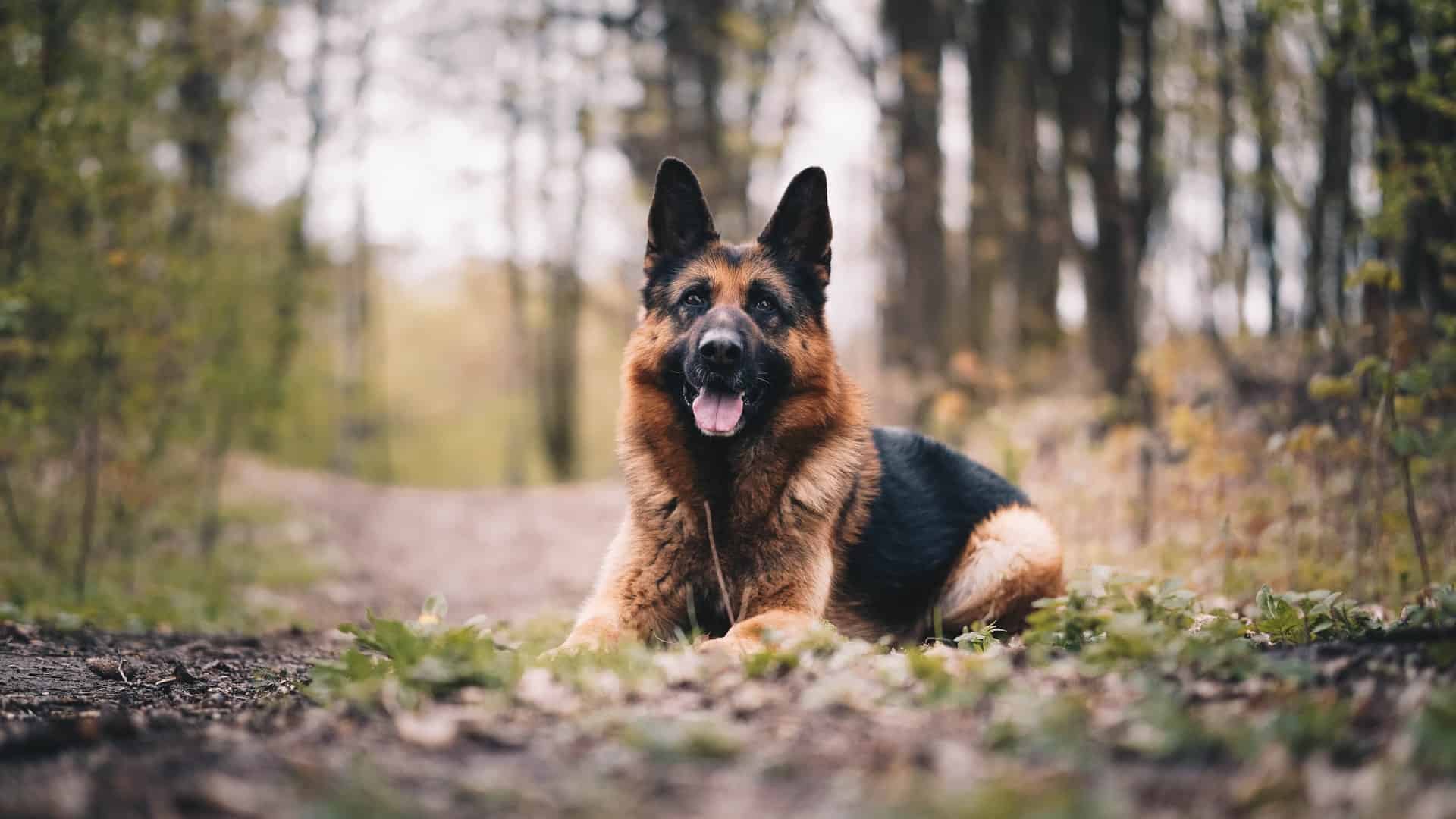
When it comes to official German Shepherd colors, we must emphasize that there are 11 in total within the breed description.
These colors include:
• bi-color,
• black,
• black and cream,
• black and red,
• black and silver,
• black and tan,
• grey,
• liver,
• sable,
• and lastly, white.
Within this range, black and silver German Shepherds are the most unusual options.
If you thought a silver German Shepherd is completely silver, you’ll be disappointed. That’s not usually the case.
It’s more likely for a silver German Shepherd to have large black areas on the body, face, and legs.
Darker Shepherds Are More Popular

All of the 11 listed colors are recognized, but it’s an unwritten rule that strong and rich colors are preferable.
Silver-grey German Shepherds and silver sable German Shepherds are less common.
Washed out colors like blue German Shepherd and livers are considered a serious fault. And, if the dog has blue eyes, the judges won’t be thrilled either.
The white coat is pretty undesirable because it resembles an albino German Shepherd, and it will disqualify you from the show ring.
What Causes Different Coat Colors In A German Shepherd?
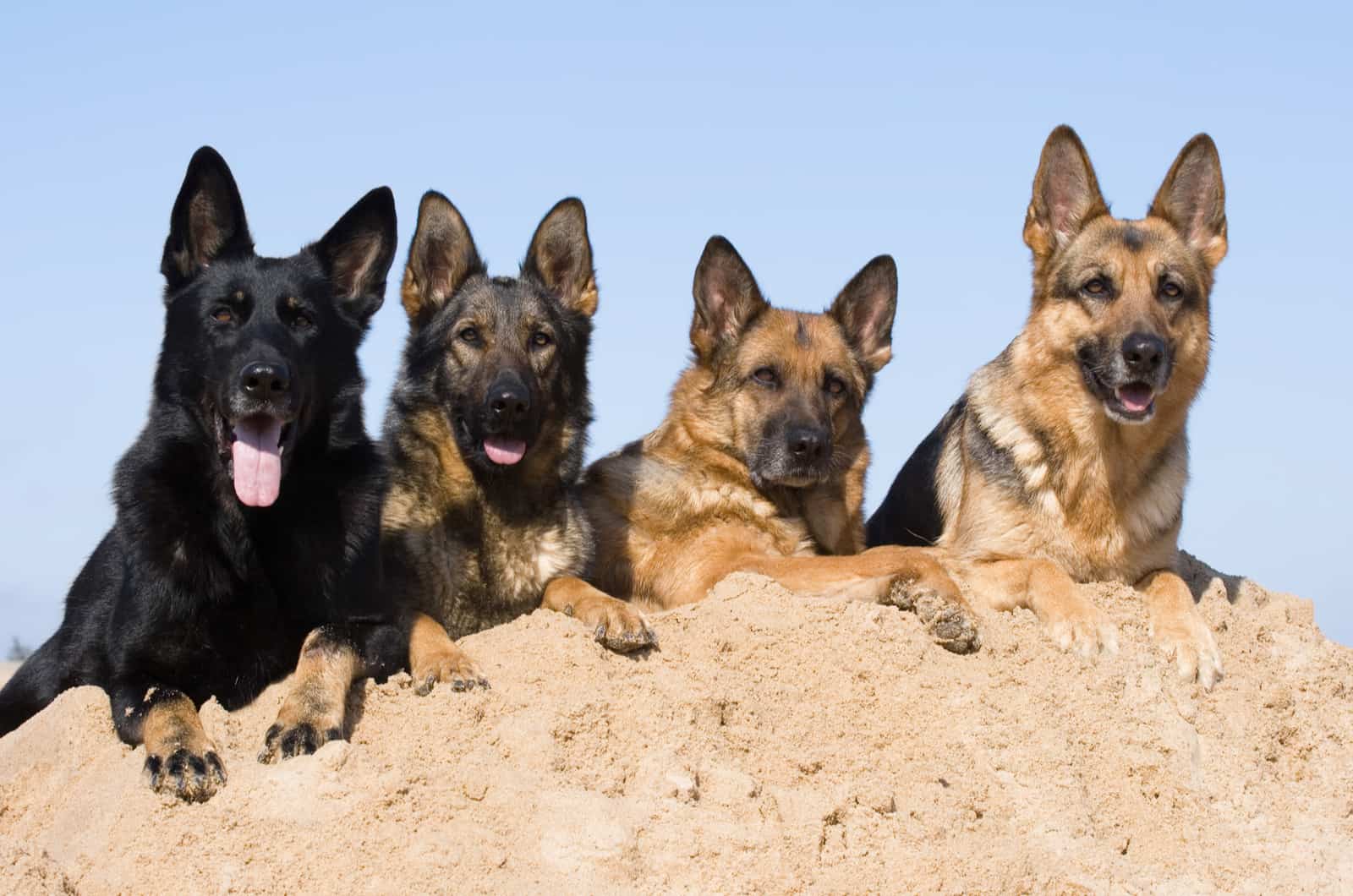
Genes or alleles are responsible for coat colors and patterns in all dogs, not only the silver German Shepherd. Dog experts have narrowed color genes in dogs to a limited number. German Shepherds are relatively easy since they’re more limited than other breeds.
Alleles for color receive influence from their different locations or loci along the dog’s chromosomes. Scientists have assigned a name or a set of letters to each locus.
Every set of genes has two copies. These copies can be identical or different. If the two copies are different, then one will usually dominate the other. The dominant copy shows up as a physical characteristic, while the other doesn’t appear, and is recessive.
Since each parent randomly passes on one of their two gene copies to each puppy, recessive traits can even make appearances in later generations.
For example, a black and tan gene is dominant over a solid black gene. Two black and tan parents could carry a copy of the solid black gene, but they will only express the dominant pattern. The genes would be at/ab x at/ab.
Only if two copies of recessive genes are present will the recessive gene show up in a form of coat color.
Alleles That Are Not Present In The German Shepherd Breed
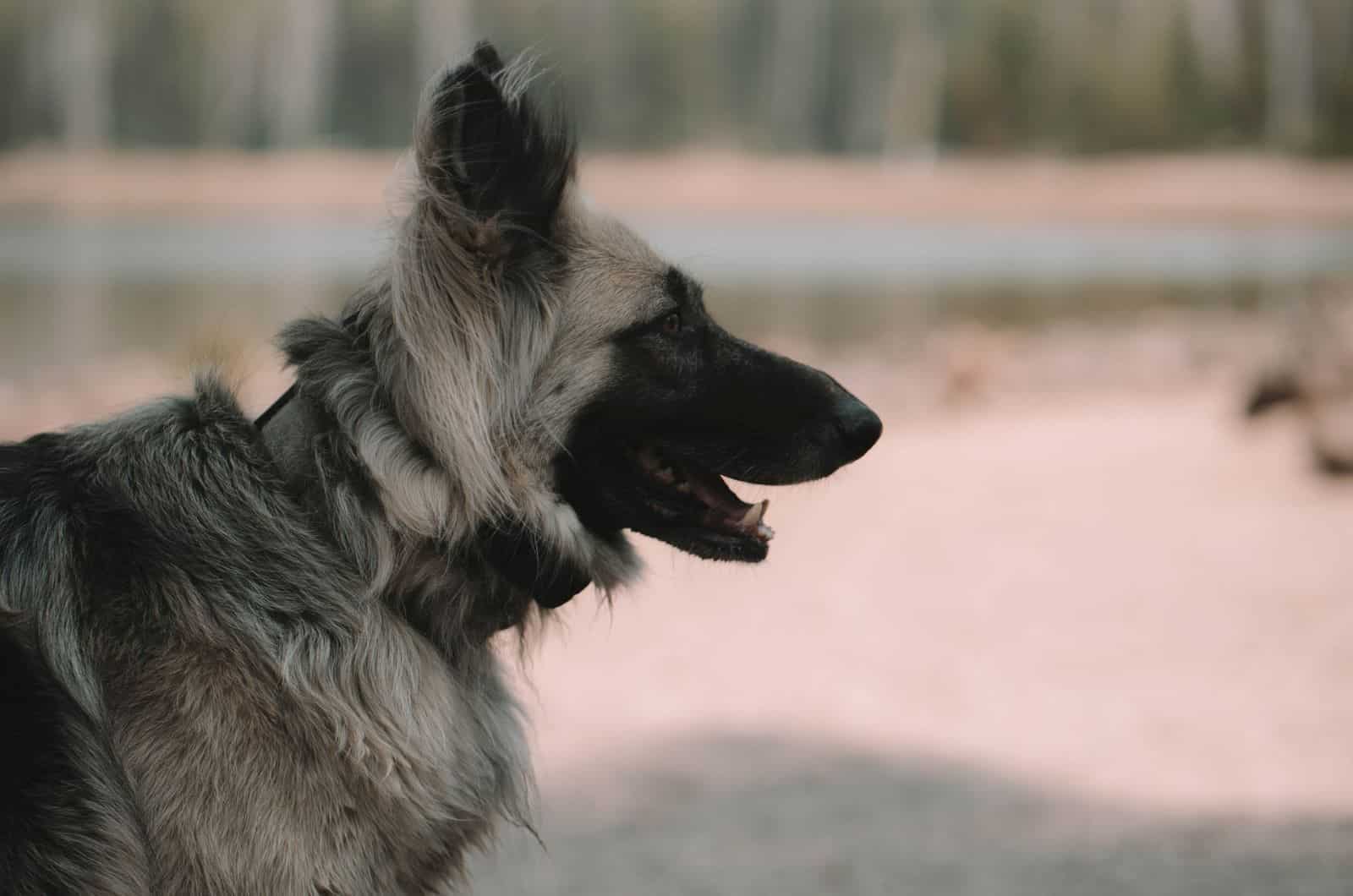
To understand why German Shepherds are silver, we need to eliminate a few causative factors from the start.
• “H” locus – Harlequin, in Great Danes.
• “M” locus – This has genes responsible for merle. Merle is a marbling of black and white, often appearing in Heelers, Dachshunds, and Aussies. Purebred German Shepherds can’t be merle.
• “K” locus – We believe German Shepherds are always recessive “ky/ky,” meaning they are not dominant black like French Bulldogs and Labradors. A “ky/ky” genotype allows the German Shepherd to express the agouti color group discussed below. “KBr” is a brindle, and breeders have eliminated it from the German Shepherd gene pool.
• “S” locus – The white spotting and piebald gene does not cause the piebald in panda German Shepherds nor the solid white German Shepherd.
Alleles With Silver Color
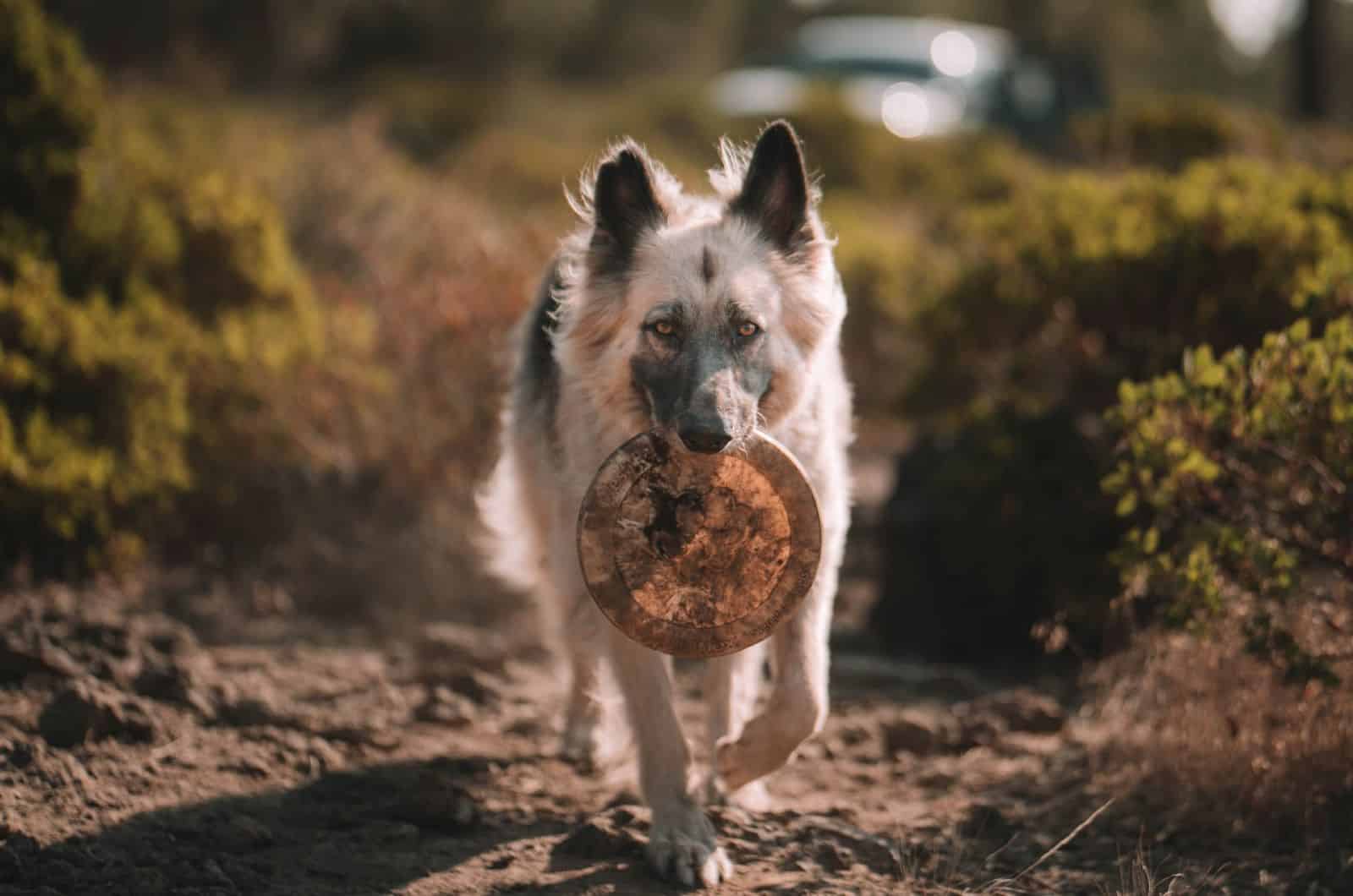
“I” locus
Geneticists haven’t confirmed yet, but they’re working on the discovery that believes there’s a switch that will determine the intensity of red and yellow colors in dogs. If the gene fails to turn on, or if it only has a partial effect, then dogs will be lightly colored or have a washed-out appearance.
The recessive intensity suppression gene is similar to the dilution gene on the black pigment. The lighter a GSD’s tan points are, the more silvery it looks.
“D” locus
Silver German Shepherds aren’t blue dogs. The dilution gene affects black hair or eumelanin as well as red hair, but this makes them look muddy rather than pale.
Diluted dogs are d/d while normal dogs are D/D or D/d. The dilution gene is a recessive one.
Dog experts also refer to blue GSD as steel blue or mouse grey.
“KIT” gene
The KIT gene was recently discovered, and it’s responsible for the piebald German Shepherd. Panda German Shepherds can be silver, but they’re quite rare. Silver will show up as cream or pale beige where the tan or red colorations would be.
“E” locus
The “E” locus is mostly relevant in German Shepherds as the dominant black facial mask.
Silver German Shepherds can still have a black mask, and are considered Em/e, Em/EM, or Em/E. Dogs carrying E/E or E/e don’t have a black mask, but they do have the dominant gene, which allows black expression in the coat.
Recessive e/e dogs are not able to produce eumelanin in their coat, and are white, yellow, or red depending on the dog breed. For example, Dutch Shepherds are e/e and are yellow to tan, while German Shepherds are e/e white.
As for the silver dogs, a separate gene or modifier suppresses red pigment in white Shepherds. White dogs with reddish fur around their ears and across their backs support the action of another gene.
“B” locus
Liver German Shepherds are not linked to silver coloration in any way. B/B and B/b dogs are normal, while b/b Shepherds cannot produce black pigmentation at all. These dogs are chocolate with no effect on tan markings.
How Genes Work, And Why Is The Agouti Gene So Important?
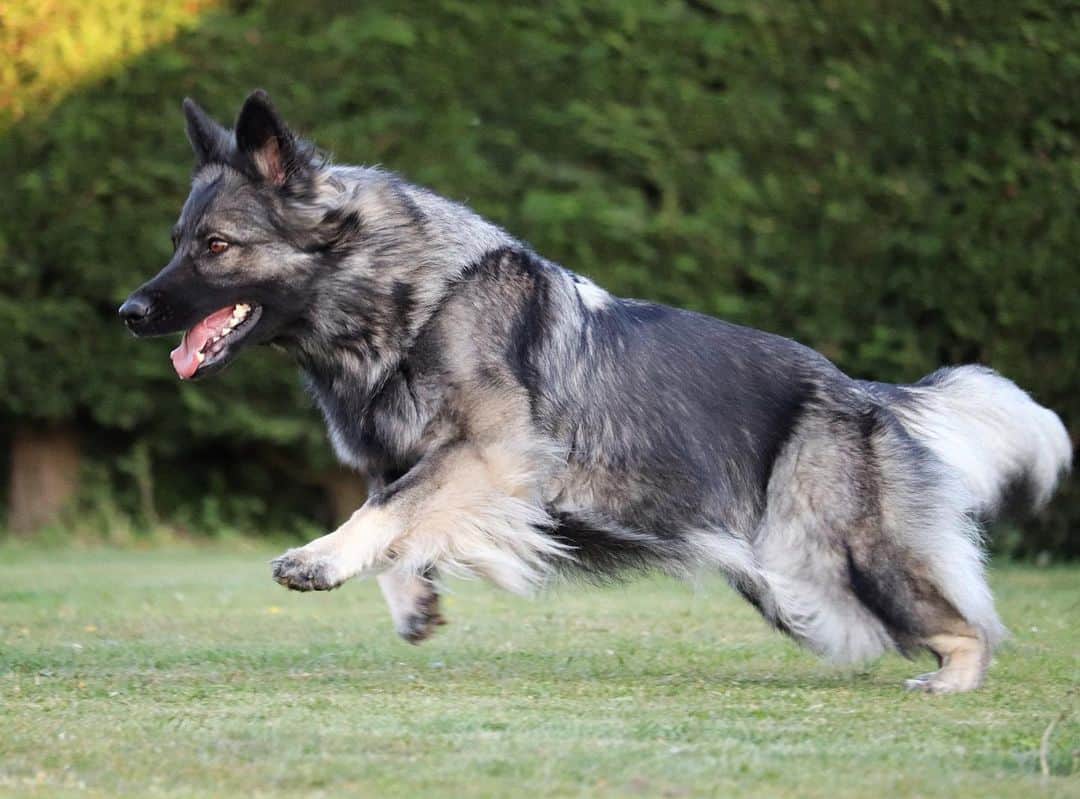
Photo from: @silversun.as
German Shepherd dogs can express any of the four alleles, which is not a common trait among dogs. Even three of the genes allow the expression of the silver color.
“Ay” – Dominant sable: These dogs will be fawn or red sable. Sable takes numerous forms, depending on the breed. If a German Shepherd is Ay, it will mostly be a shaded sable with black and red colors meshing together.
For example, Collies have Irish spotting and sable where breeders need to select for a few non-black bands in the air. When it comes to German Shepherds, the cream instead of the red banding will produce a silver dog.
“aw” – Wild sable: Most sable GSDs are actually wild sable, or carry a similar color to grey wolves. They usually have less red and more grey and black than shaded sables. However, it’s hard to differentiate them without a blood test.
While sables can be silver, patterned sables remind us of an unorganized saddle or blanket, and could demonstrate incomplete dominance of the while sable gene over the tan-pointed gene.
“at” – Black and tan or tan-pointed gene – This is the most common silver expression. It’s usually pale cream with a black saddle or blanket.
“a” – Recessive black – Solid black dog.
Silver German Shepherds have a black and tan base color, or even wild sable. The intensity of the gene likely shows incomplete dominance.
Dogs with two dominant intensity genes I/I show more vivid reds and tans than those dogs whose code was I/I. Very light or silver dogs would be i/i.
The relationship between the genes and their effect on color intensity is yet to be discovered. There is a theory that two bright-colored dogs won’t produce silver puppies, but their offspring could do it sometime in the future.
For example, if you have two black dogs and red European show dogs, the male is not as rich in color as the female.
The Link Between The Silver Coat Color And Black And Tan
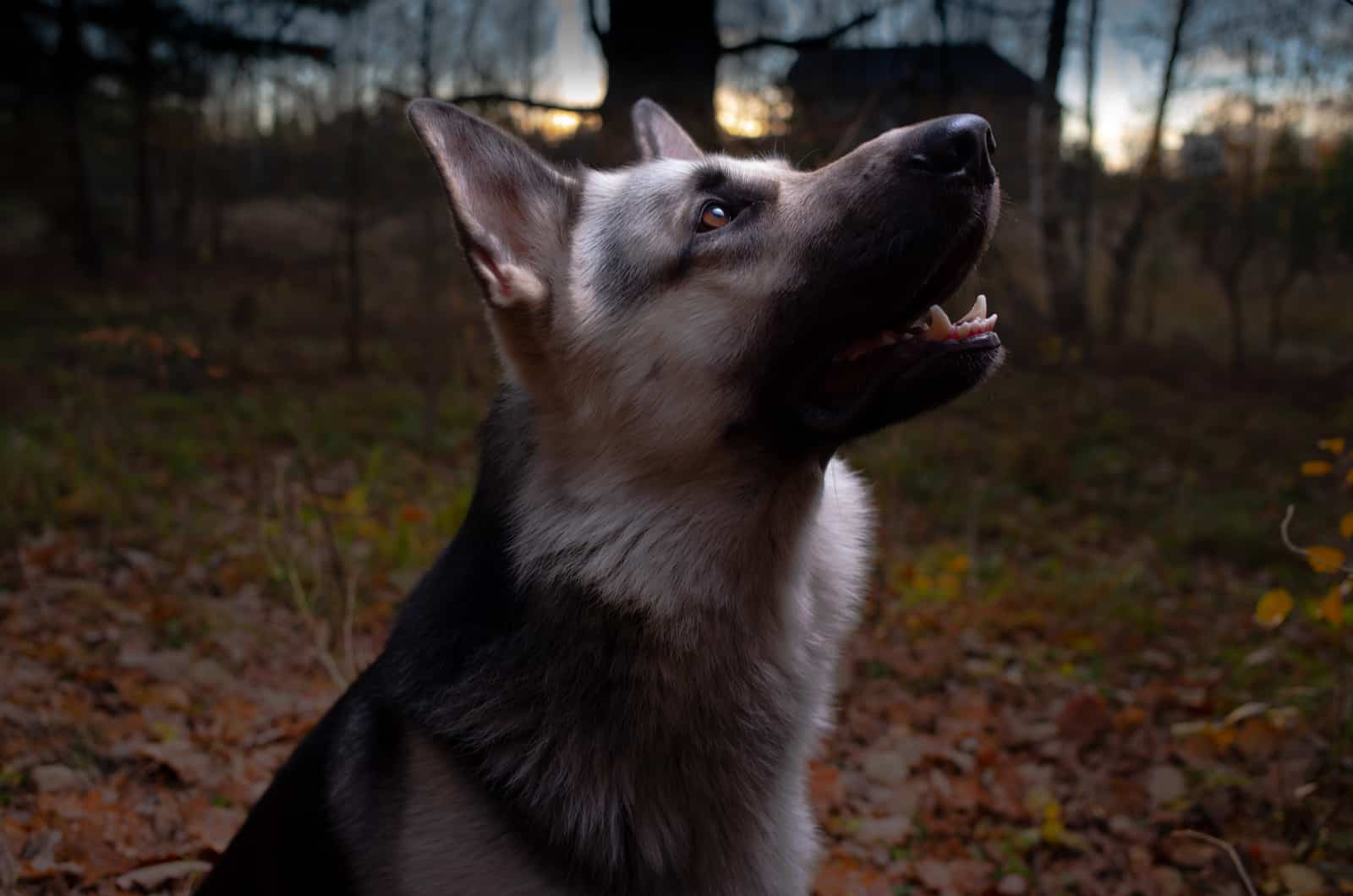
Black and tan German Shepherds come in three varieties. Still, geneticists have proved they’re genetically all the same, and label them as “at”.
Those color varieties are:
• Tan with black in a distinct saddle pattern (saddle can be minimal or extended)
• Tan with a black extended blanket
• Black and tan bicolor. With thick variety, tan markings are minimal at points of the eyes, the shoulders, and minimal streaks on the toes. Some German Shepherds have markings similar to Rottweilers, with tan or silver on the front of the chest and extending up the inside of the hind legs. Geneticists may distinguish German Shepherds with extended blankets versus bicolor dogs. Blanketed dogs have the rally gene present.
Dog experts have discovered a separate gene; the one they call the rally gene, which is responsible for the saddle pattern in black and tan dogs like the German Shepherd and the Lakeland Terrier. Creeping tan affects silver the same way as it would affect brown or red.
Some German Shepherds with tan points end up with little brown or silver creeping, and they seem like they have extended blankets. Others have very small saddles. The E locus may affect the amount of black masking on the body.
Many coat variations in German Shepherds act on the dark pigment, or eumelanin. You can describe dilutions and other modifications just as you would describe a black and tan dog.
Blue dogs can be blue and tan, solid blue, and blue bicolor.
Sable dogs can be blue, where dilution affects the black banding. The liver acts exactly like the blue, but chocolate brown or lighter brown acts to replace areas of black.
Silver is a modification of reds and tans, or pheomelanin pigmentation leaving dogs black and silver. Silver bi-colors are predominantly black with minimal silver points. Silver and black dogs can have extended saddles and blankets, just like their tan counterparts.
Silver doesn’t usually present as a solid color. Solid grey dogs have separate genes at work, which are blue, not silver.
A rare individual may show minimal black markings and appear solid grey. If you look closely at these dogs, you’ll see a hint of saddle or black banding or ticking of a sable or agouti GSD.
You can spot the difference between cream and silver versus blue or Isabella German Shepherds by looking at their eyes. Silver dogs have no disruption or eumelanin, and will have dark-colored eyes. Blue and Isabella Shepherds have light-colored eyes.
Are Black And Silver German Shepherd Dogs Allowed In Dog Shows?
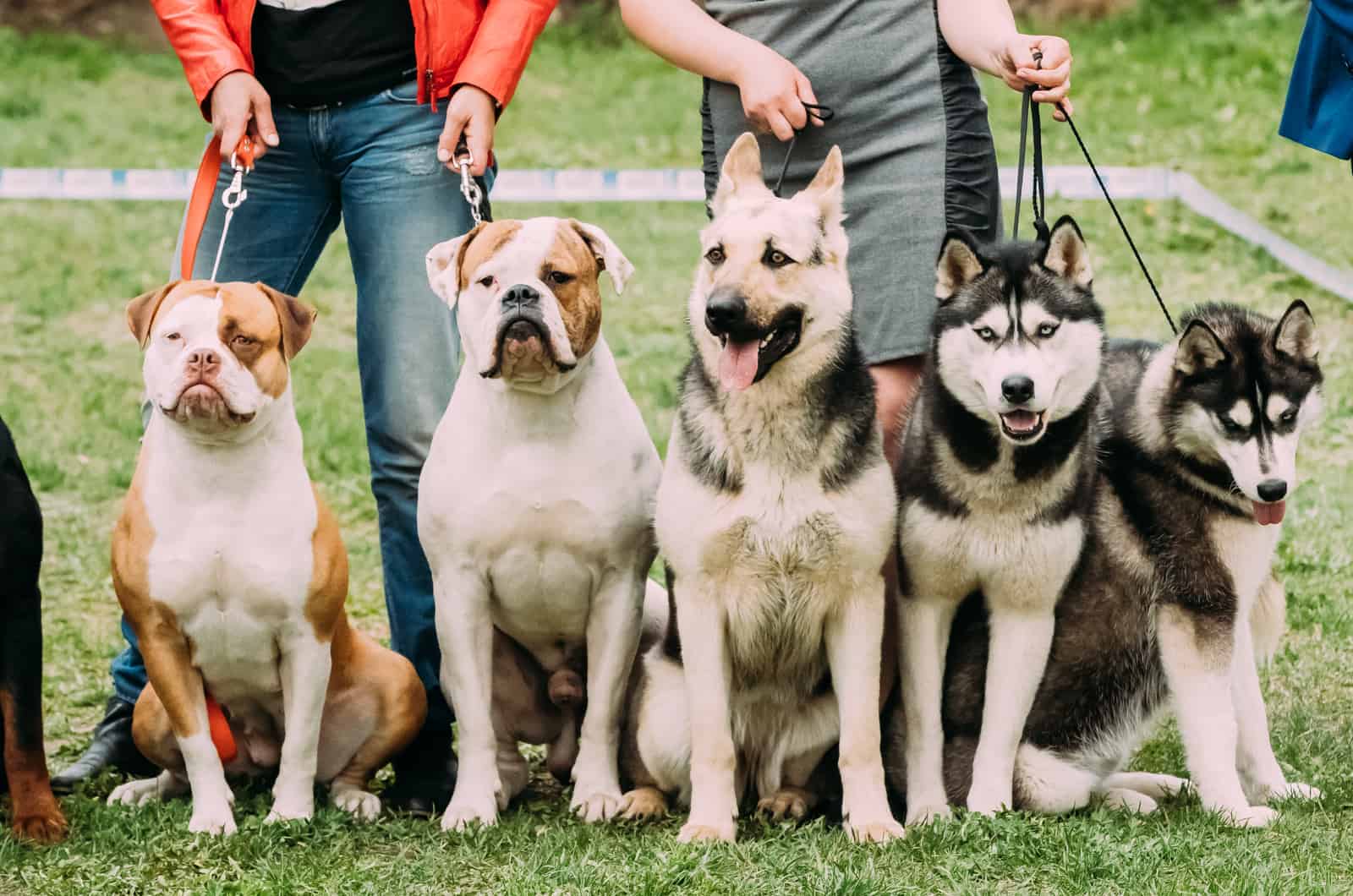
Of course, you can register silver dogs with the American Kennel Club (AKC) as black and silver dogs. They can completely access conformation exhibitions and other dog shows. However, since silver is a dilute color, the judges will consider this a fault.
As an unwritten rule, judges always prefer bright and rich colors encouraged by the German Shepherd breed standard.
Silver is still an accepted color variation of the GSD. Silver can infiltrate sable, but the AKC will classify those dogs as sable. They don’t distinguish various shades of sable or the presence of brown versus pale tans or creams.
Even though the name, silver sable, is quite fancy, the registries will refer to them as black and silver dogs.
The AKC doesn’t differentiate black and silver from black and cream, which may be difficult for most people to do.
Black and silver pups are very different from black and tan pups, but their difference from black and cream is much more subjective. Black and silver dogs may approach white with less of the reddish or yellowish tones that cream-colored German Shepherds have.
Taking Care Of Your Silver Sable German Shepherd
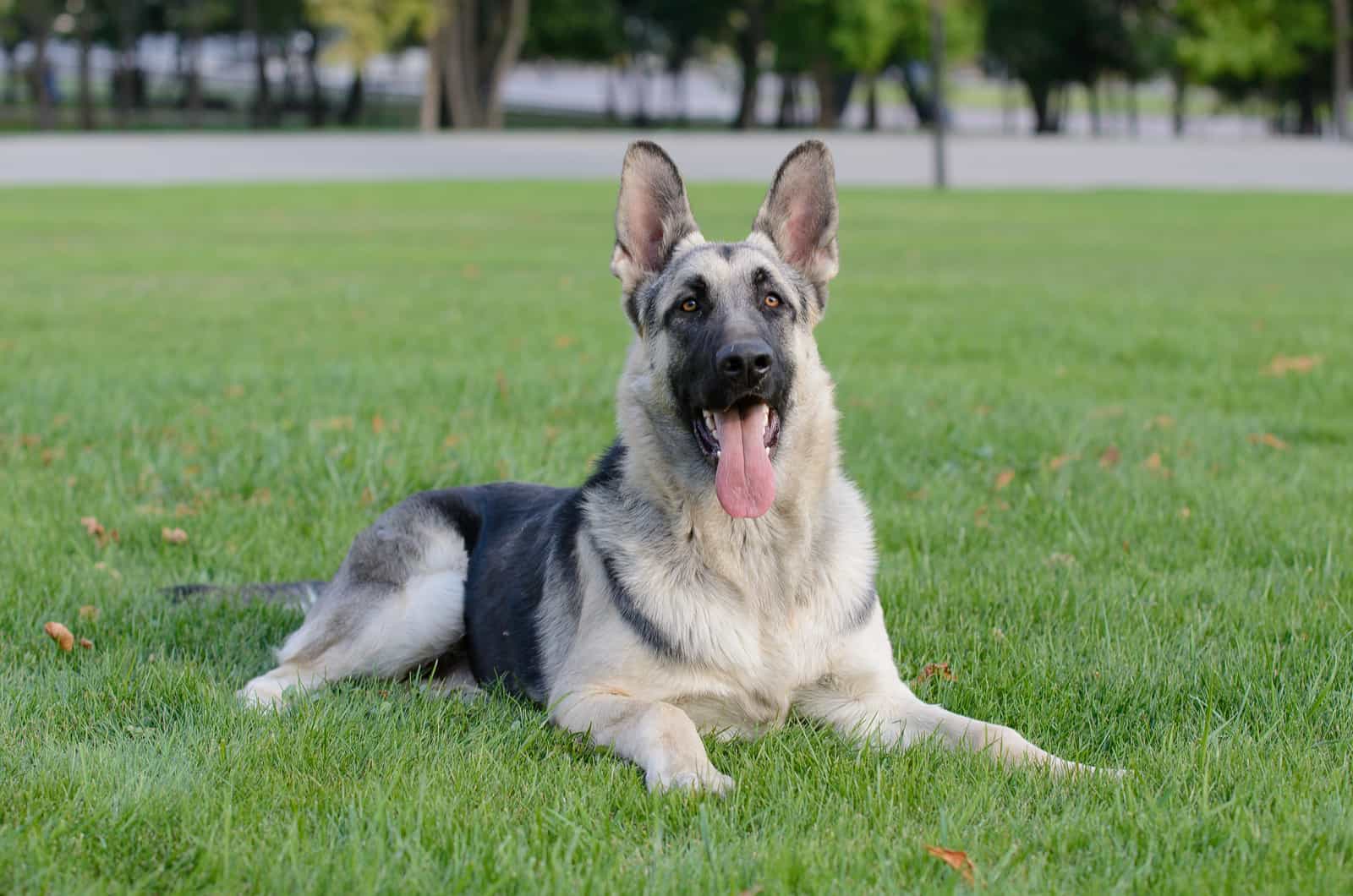
The silver German Shepherd dog is absolutely true to the breed standard, whether it’s the UKC, SV, or AKC.
Black and silver Shepherds are 22 to 26 inches tall, and weigh around 50 to 100 pounds. When it comes to a male vs female silver German Shepherd, you can notice the obvious difference in bone substance and muscular development. Females are usually thinner.
Silver German Shepherds, like all Alsatians, have a distinctive head with erect ears and a domed forehead. White Shepherds usually have much less of a stop.
All German Shepherds, no matter their color, have a moderately long body-length-t– height ratio, a short to medium dense double coat, and a long and soft tail.
Just like all the other GSDs, silver Shepherds are usually aloof with strangers, and use inherent discretion to detect possible threats. They’re mostly polite and only attack when they have no other choice but to protect their families.
Many silver German Shepherds are working dogs in police forces. They help with search and rescue actions, and serve the military forces.
As family dogs, German Shepherds are extremely loyal and affectionate. They’re not aggressive by default. GSDs usually bond with one person, but they can surely outgrow the “one man phase” and attach to multiple family members.
Just like any other German Shepherd, the liver Shepherd is an intelligent dog with strong guarding instincts. They need a strict trainer who will carry out commands and use positive reinforcement consistently.
German Shepherds can be quite a handful and a challenge for new owners, especially if they’re suffering from a certain health condition.
The color, liver, doesn’t have any impact on the dog’s health issues. They can suffer from the same disease other GSDs suffer from.
The most common health problems include:
• Epilepsy – Unexplained seizures
• Low thyroid production
• Elbow dysplasia
• Hip Dysplasia
• Stomach bloat and torsion
• Pannus – Inflammation of the cornea of the eye
• Degenerative myelopathy – Progressive neurologic disorder
• Panosteitis – Bone inflammation of growing puppies
• Von Willebrand’s – Clotting disorder
Silver German Shepherds get along great with children and other dogs in the house, but they can have trouble with some individuals outside the family. They’re protective of kids, but they shouldn’t be left alone with them because of their size and strength.
Related Article: German Shepherd Growth Chart
What you can do to curb bad behavior is to exercise them mentally and physically. Include strenuous activities, training, and problem-solving puzzles to ensure their energy bar at the end of the day is drained.
Are Silver German Shepherds Rare?
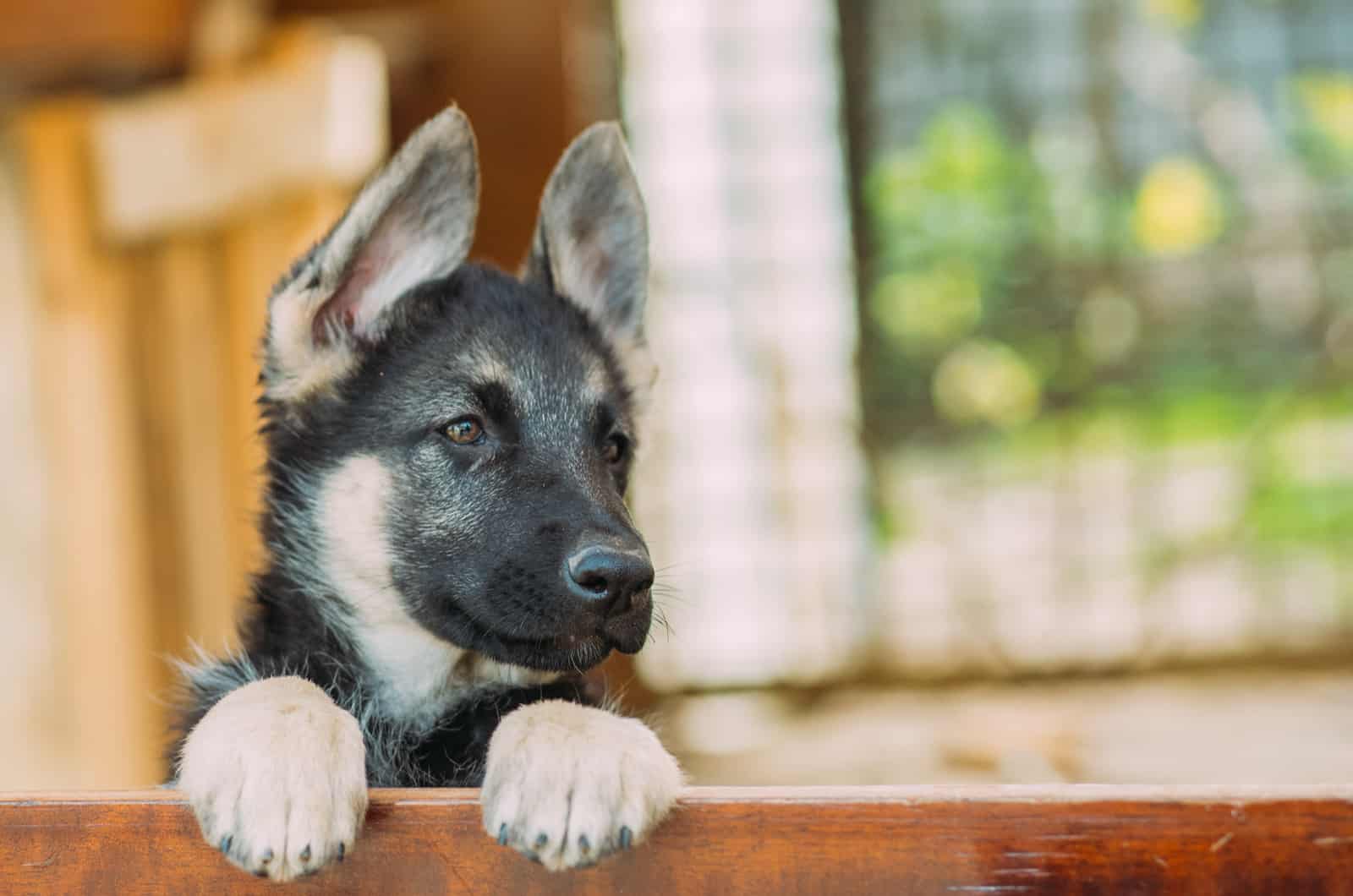
Raise your hand if you’ve seen a silver German Shepherd in person!
You probably haven’t because these dogs are very rare.
The unique silver-colored coat is a result of two recessive genes for their silver coat; one from each parent. This means that both of the silver German Shepherd’s parents need to be carriers of the genes.
However, this doesn’t mean that one or both parents need to have a silver coat as well. The silver coat may skip a generation or two.
This makes the breeding process extremely difficult for the breeders. You never know when a German Shepherd puppy will be born silver. That’s the thing with recessive genes; they don’t always show up in the parents.
Even if both parents were carriers of the recessive genes, there’s still only a 1 in 4 chance that the puppy will have a silver coat.
Silver German Shepherd Puppies For Sale: Cost
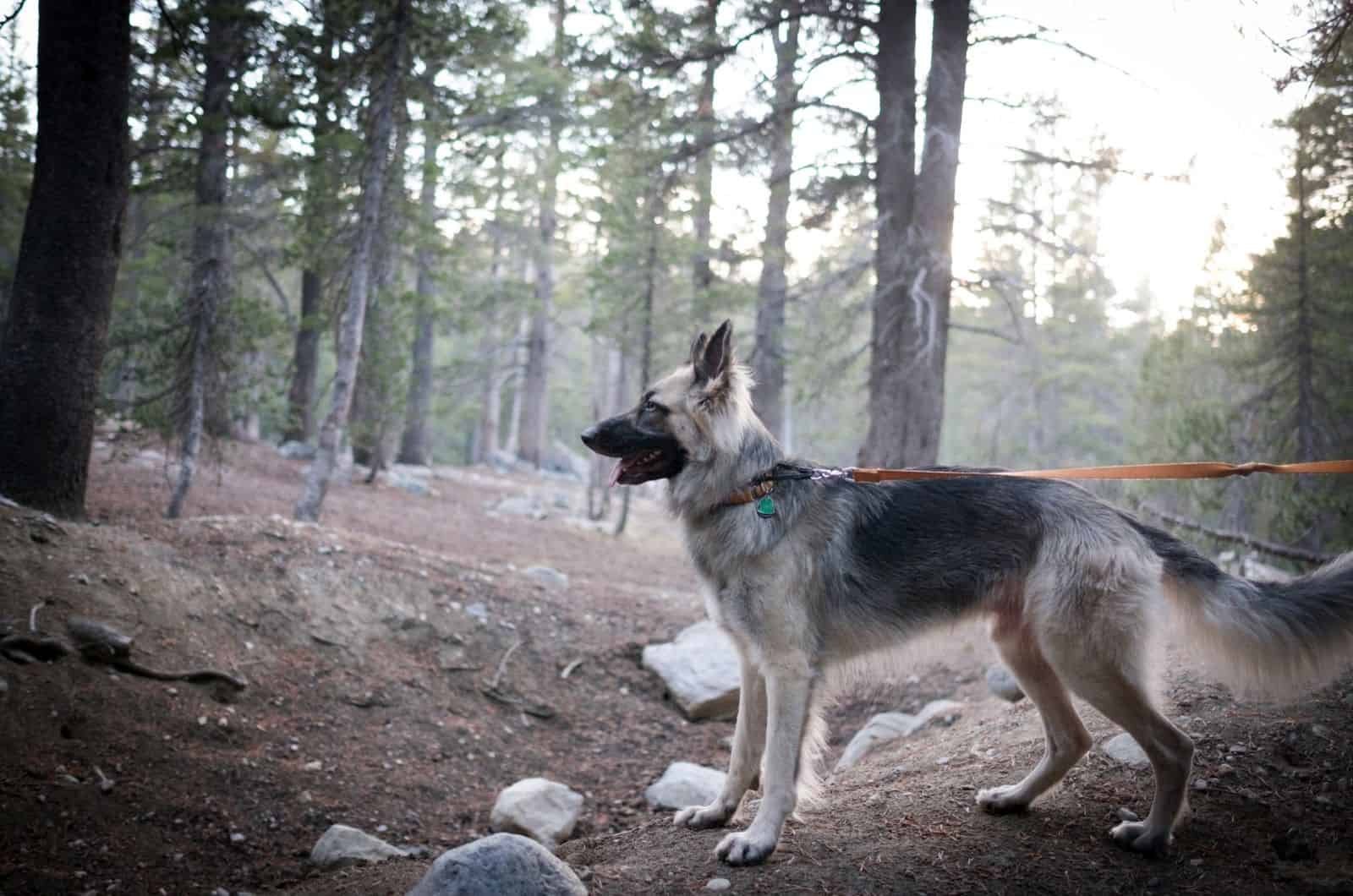
The average cost of a silver German shepherd can range from as little as $500 to as much as $1,500 and even more!
Silver German Shepherds are relatively rare, which can lead the breeders to pump up their price. You can often find cases in which you’ll have to pay more for a German Shepherd puppy simply because it’s silver.
There are many factors that can affect the dog’s cost, including whether the parents were also silver Shepherds, the age of the dog, health issues, the area where they live, etc.
Adopting a silver German Shepherd is always a better option than buying from a breeder, but it’s also quite difficult to find these dogs in shelters. Consider yourself extremely lucky if you see a silver GSD in your local rescue center.
Should I Get A Silver German Shepherd?
Yes, you should! The Silver German Shepherd is just as good as any other German Shepherd. Why? Because German Shepherds are some of the best dogs out there! They’re loyal to the bone, love showing affection, and turn heads everywhere they appear.
You can’t really say no to those adorably smushy faces!
